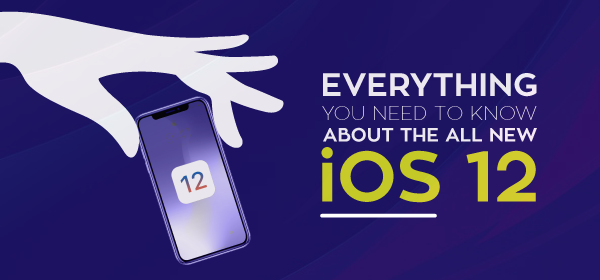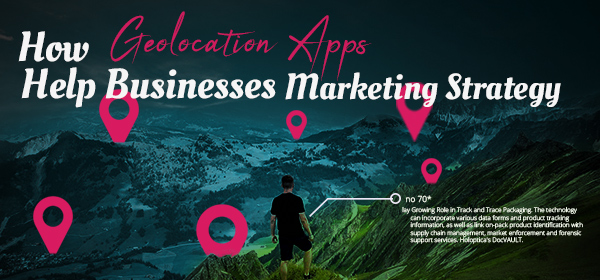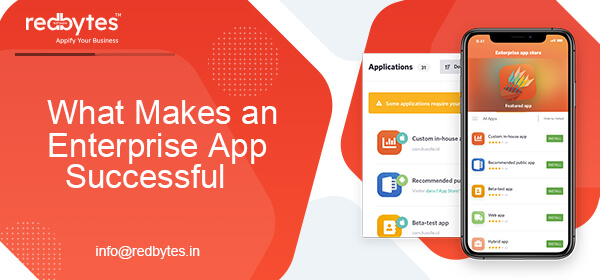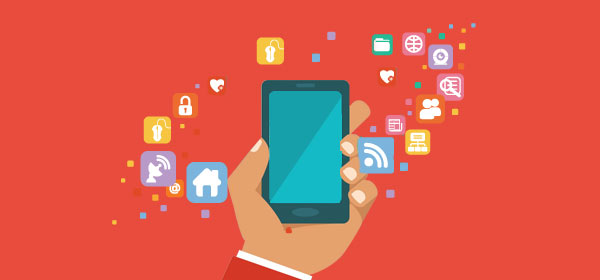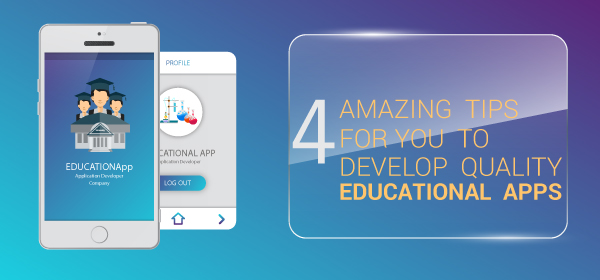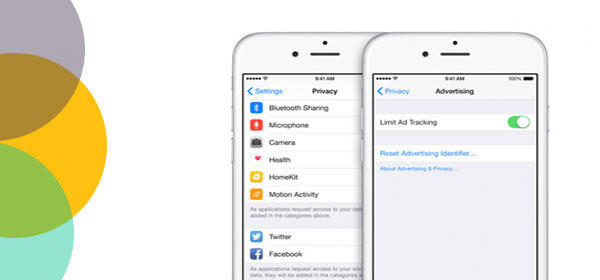Apple has unveiled an all new iOS 12 at Apple’s annual developer conference at San Francisco. iOS 12 is the latest version of the operating system for iPhone and iPad. The announcement revealed all new features for users. The most attractive of them are related to device performance and speed, notifications, privacy standards and emojis.
With the introduction of the latest iOS 12, every model from 5S will be getting performance boost. This means, users can happily upgrade their older devices OS to iOS 12 to avail latest features. The bug fixes for the problems reported by iPhone and iPad users for previous iOS version are fixed in this iOS 12 version.
The main focus of iOS 12 is not cosmetic look so much as improving the user experience through brilliant software upgrade splashed with unprecedented surprises.
To satiate your curiosity, here is everything you ought to know about the latest iOS 12.
What Devices Does it Support?
iOS 12 will be easily available for devices that currently run on iOS 11 at present. Apple users who are using any iPhone model from 5S or newer, or an iPad from iPad mini 2 and iPad Air 2, or sixth generation iPod touch can expect iOS 12 features on their respective device.
Compelling Features of the all New Clever iOS 12:
1) Speed
Apple promised to boost the speed of iPhone devices with iOS 12. Since this new version is optimized for better performance standard, users will experience noticeable speed improvements for smartphones starting from iPhone 5S in 2013.
Due to this new upgrade, apps on Apple devices will launch 40% faster, which is twice as fast as before.
Apart from the app launches, the camera is also optimized for speed and should load about 70% faster from lock screen.
The keyboard is also expected to appear 50% faster and Share Sheet is displayed 2x times faster, too. iOS 12 also allows multitasking with lots of apps.
Thanks to Apple’s promise to improve performance all over iOS, everything you do with your device will receive speed you’ve never seen before.
2) Notifications
Notifications that appear on iOS lock screen often bog users down, consuming a lot of their time while handling each of them. Apple has addressed this issue and liberated users from tackling overloaded lock screen.
Apple has enabled Grouped Notifications for iOS 12 users so that they don’t have to waste their time swiping away multiple push messages from the same app one by one.
As a result, notifications can be grouped together or delivered without interrupting users with a sound or vibration and shown in the notification centre instead of lock screen.
3) Addiction Controlling Features
Like Google, Apple is also making active efforts to wean users off their digital addiction. For people who can’t resist their iPhone devices, the new tool ScreenTime is here to assist. The feature is set to generate weekly Activity Reports that suggest the app usage occurred for the week.
It contains the details about the how frequently you receive notification or interact with the device during the day. It enables to set up App Limits that work as restrictive timers for specific apps.
4) Parental Controls
One of the main parental controls in iOS 12 is addiction control as described above which monitors and limits children’s apps usage on their iPhones. Parents can stay updated of their child’s activity on their iOS devices and set App Limit for them.
In case a child wants to increase the device usage time, the parents can decide whether or not to approve the request.
Downtime is another feature that helps parents set up when notifications shouldn’t be displayed on their kid’s phone and block access to certain apps.
5) Conference FaceTime
FaceTime allows users having iOS 12 on their iPhone and iPad to perform video and audio calls with as many as 32 users simultaneously. Call participants can have soundless notification without any ring and tap it to instigate conversation. FaceTime also enables you to add text effect to your photos and videos.
Apple’s FaceTime also comes with end-to-end encryption to make your conversation private and exclusive. FaceTime messages are integrated into conversation and can be operated by users.
6) More Animated Expressions with ‘Animoji’
To unleash the world of creative expressions and lively messages, Apple has introduced Memoji using which users can create custom Animoji. With Animoji, iOS 12 users can express their personality, mood and more.
You have a range of Animoji including ghost, Koala, tiger, etc. You can also record 30 second clips of Animoji. Moreover, Memoji will recognize your expressions using Tongue and Wink to make suitable animoji.
iOS 12 also has new built-in camera effects and third-party sticker packs to allow users to enhance their pictures.
7) Privacy and Security
Apple has increased the level of privacy control and security of user data in iOS 12 update. It has Safari to put a stop to Facebook’s ‘Like’ and ‘Share’ buttons, and also prevents other intrusive widgets and ads from tracking and infiltrating the device without permission.
There is a ‘Do Not Disturb’ during Bedtime feature created to and hide notification prompts until the next morning so that users can unwind in the evenings without worrying.
The new updated USB time out feature which is available in Beta iOS 11.4.1 will help protect user data from hackers or at the time your device is confiscated by law enforcement. The feature will limit activities via the Lightning port after an hour of inactivity. With USB timeout, hackers will not be able to unlock the phone and access user data by connecting them to a system or a hacking box.
8) Photos
Probably to emulate Google photo app, iOS 12 offers its own built-in Photos app in the new “For You” tab. The app will also surprisingly suggest sharing group photos from events with the people present in them.
Additionally, Apple has also improved searching photos within the app with personalized suggestions to locate photos based on recent events, places and people.
9) Siri Shortcuts
Seemingly competing with Alexa and Google Assistant apps, Apple’s Siri is now improved with a new feature called Siri Shortcuts. It allows users to utter a set of specific custom commands to perform a certain action like opening an app or making a call. Siri Shortcuts is one of the most phenomenal updates for iOS 12 that fits close to a popular automation system IFTTT.
10) Google Maps on Apple’s Car Play
Car Play, Apple’s in-car connectivity system has been limited to Apple Maps for navigation purpose. With iOS 12, Apple has gone generous to support the third-party navigation apps like Google Maps to enhance user delight.
11) Automatic two-factor pass code copying
For users making online transactions, two-factor or one-time password (OTP) might be a tedious, nagging data-security process. But iOS 12 removes the need to switch to Messages to copy and paste the code into respective app or website. Instead, two-factor code appears with an AutoFill option as soon as the text message with OTP pops on your device, and you can simply paste it in the field.
Additional Features:
- The voice memos has been updated and made simpler so that you can now access it via iCloud and use the voice memos across multiple device
- In case of students there is an add on feature which allows them to add their student ID card to the Wallet so as they can use it at various places like libraries, school or college functions etc.
- iOS 12 has launched a new file format know as the Universal Scene Description which can be used by 3D developers to created animations that specially needs to work on mobile devices.
- Apple news now has a browser feature which makes it easier for user to search for more interesting and related contents
- People dealing with share market and related businesses, they have a good news as the Stock app is revamped and now they can get updated stock charts, quotes, contextual reports etc directly from the Google News
When is it Available to Users?
While the developer version of iOS 12 is already available, the first public beta version of the OS is available now for download. If you are an iPhone SE user or above, then you can download the version from the Apple’s Official Public Beta Website.
To download the beta version, first you need to become a member of Apple’s Beta Software Program and after that you will have to enroll the device to start using the program. But we recommend you to not rely on such beta versions as it can cause errors or bug issues to your device. Based on the announcement, the final full version is expected to be released in September most probably for everyone.
Conclusion:
Introducing iOS 12, Apple has stimulated immense interest of iOS users and has instigated a ripple of excitement in the market. The rare features of the novel iOS 12 described above will definitely capture a lot of attention and is likely to open doors of fresh opportunities for iPhone app developers. The final version is to hit the market in September as Apple has signified. Until then, users can take a test-ride of its magnetic features in awe.
